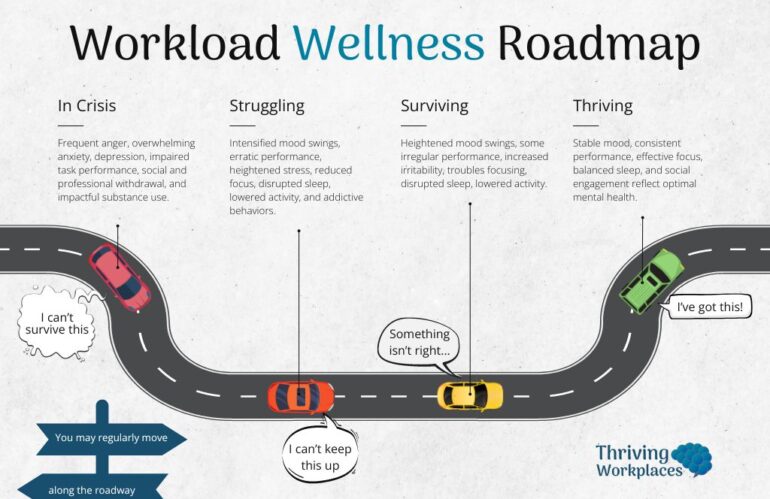A framework for understanding and addressing mental well-being
The mental health continuum provides a valuable framework for understanding and addressing mental well-being. In this blog post, we will explore how to use the mental health continuum to effectively manage your workload, promoting a healthier work-life balance.
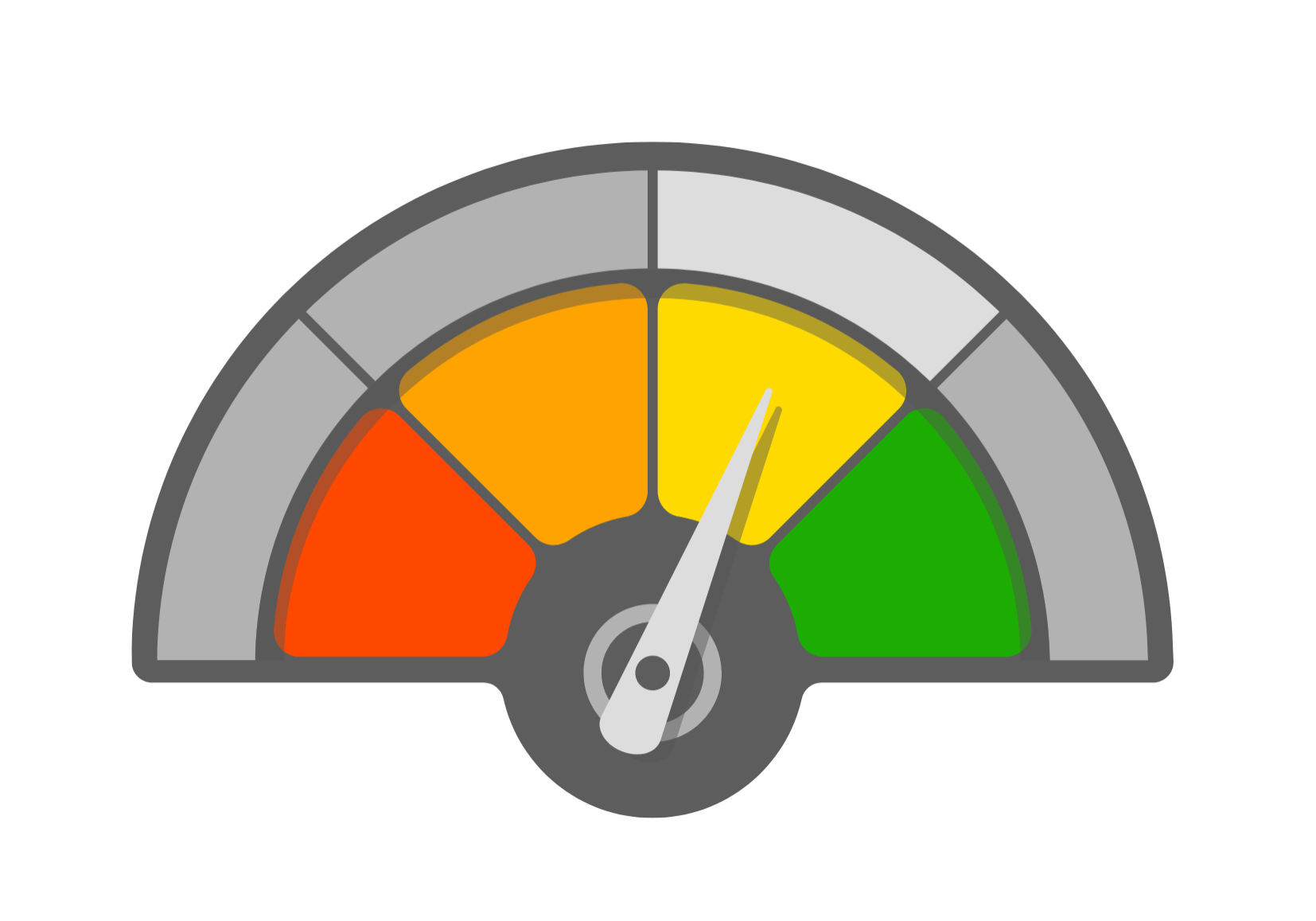
Understanding the Mental Health Continuum
The mental health continuum is a spectrum that ranges from thriving mental health to mental health disorders. It acknowledges that mental health is fluid and can change over time. The continuum typically includes four main categories: green (thriving), yellow (reacting), orange (injured), and red (ill). Recognizing where you fall on this continuum is the first step in proactively managing your mental health.
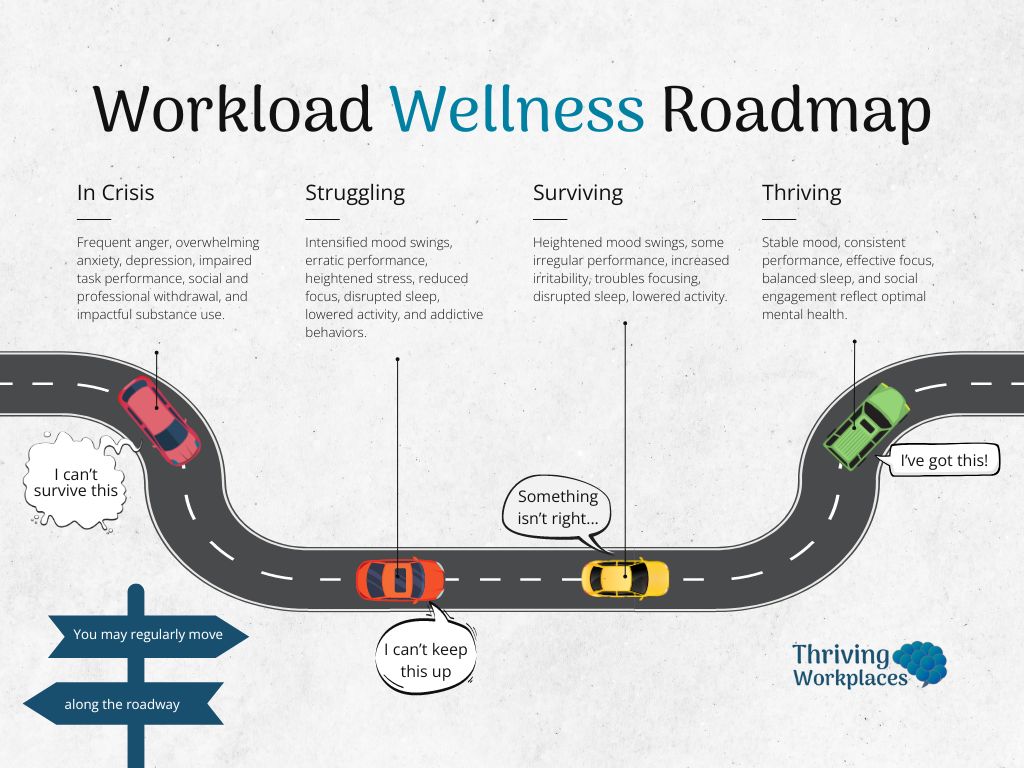
- Thriving (Green): Imagine this as your mental health paradise. In the green phase, you are thriving, feeling energized, and performing at your best. Focus on maintaining healthy habits and sustaining this positive state.
- Surviving (Yellow): It's like navigating through the jungle with a compass. In the yellow phase, you may be reacting to increased stress but are still able to manage. Take regular breaks, seek assistance when needed, and prioritize tasks to navigate through challenging times.
- Struggling (Orange): We're talking about putting on your superhero cape and asking for backup. In the orange phase, you might be injured, experiencing increased stress or burnout symptoms. Reach out for support, utilize Employee and Family Assistance Programs (EFAP), and discuss workload concerns with your manager.
- In Crisis (Red): This is the red alert stage. In crisis, your mental health is significantly compromised. Reach out for immediate support through emergency hotlines, use available PTO, and have an open conversation with your manager about what you're going through.
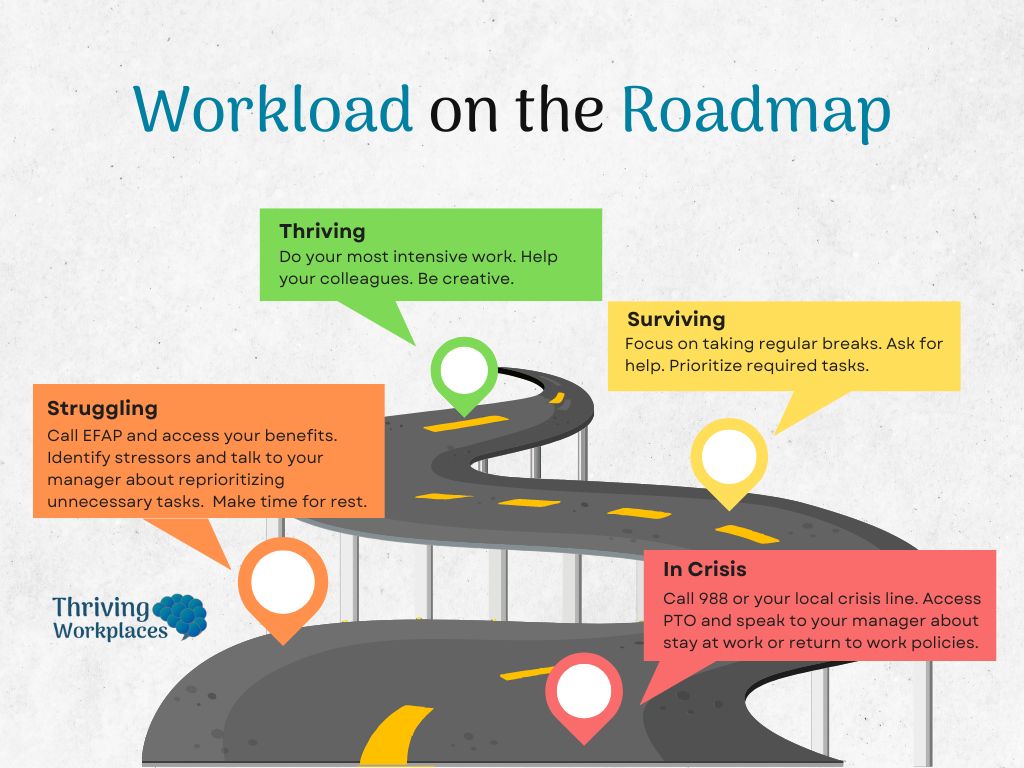
Using the Continuum
Self-Assessment
Regularly assess your mental health by considering your thoughts, feelings, and behaviors related to your workload.
Ask yourself:
- Are you feeling energized and motivated to tackle your tasks? (Green)
- Do you notice signs of stress or anxiety building up? (Yellow)
- Are you experiencing burnout symptoms such as fatigue or reduced performance? (Orange)
- Have you reached a point where your mental health is significantly compromised? (Red)
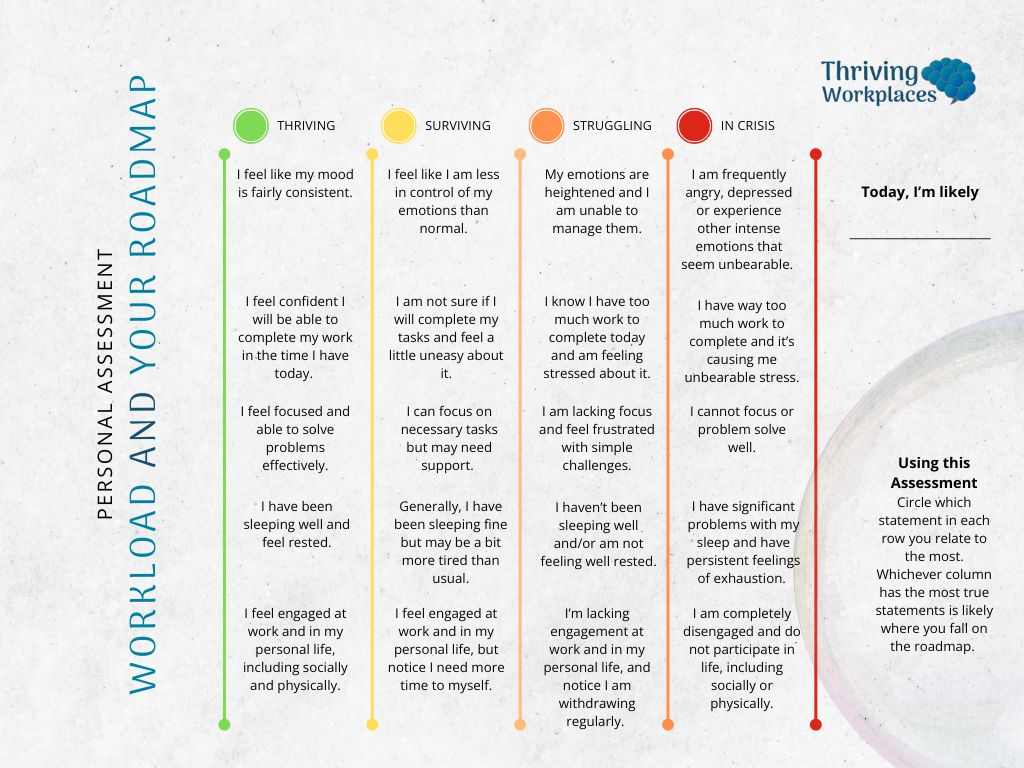
Set Realistic Goals
Establishing achievable and realistic goals is crucial for maintaining mental well-being. Break down larger tasks into smaller, manageable steps. This approach helps prevent feeling overwhelmed and allows you to celebrate small victories along the way.
Effective Time Management
Prioritize your tasks based on urgency and importance. Use time management techniques such as the Eisenhower Matrix to categorize tasks into four quadrants: urgent and important, important but not urgent, urgent but not important, and neither urgent nor important. This method helps you allocate time efficiently, reducing stress and preventing burnout.
Create Boundaries
Establish clear boundaries between work and personal life. Set specific working hours, take breaks, and avoid checking work-related emails or messages outside of these designated times. Creating a healthy work-life balance is essential for preventing burnout and maintaining overall well-being.
Seek Support
Recognize when you need support and don't hesitate to ask for help. Whether it's discussing workload concerns with a supervisor or seeking emotional support from friends and family, building a support system is crucial in navigating the challenges of a demanding workload.
Regular Reflection
Periodically reflect on your mental well-being and workload management strategies. Adjust your approach based on changing circumstances, and be proactive in addressing signs of stress or burnout. Continuous self-awareness is key to staying on the green end of the mental health continuum.
Final Thoughts
Effectively managing your workload using the mental health continuum involves self-awareness, realistic goal-setting, time management, and seeking support when needed. By understanding where you fall on the continuum and taking proactive steps to maintain good mental health, you can create a more sustainable and fulfilling work-life balance. Remember, prioritizing your mental well-being is an ongoing process, and small adjustments can make a significant impact in the long run.

Kolbi Cameron
Workplace Mental Health Strategist
